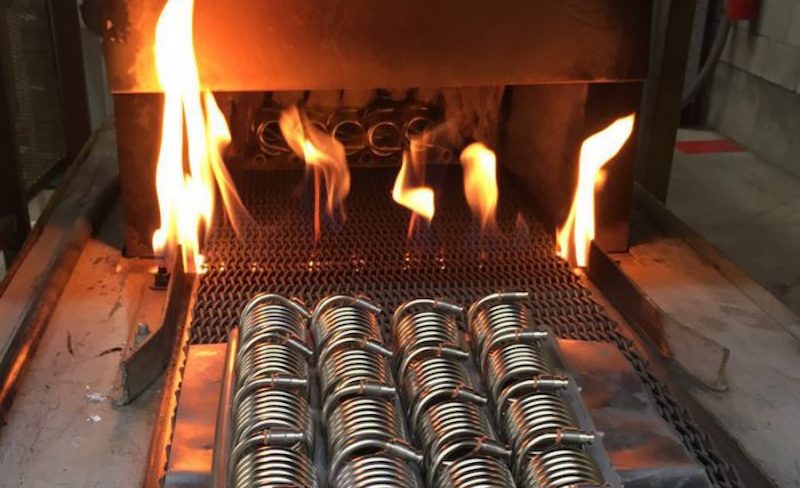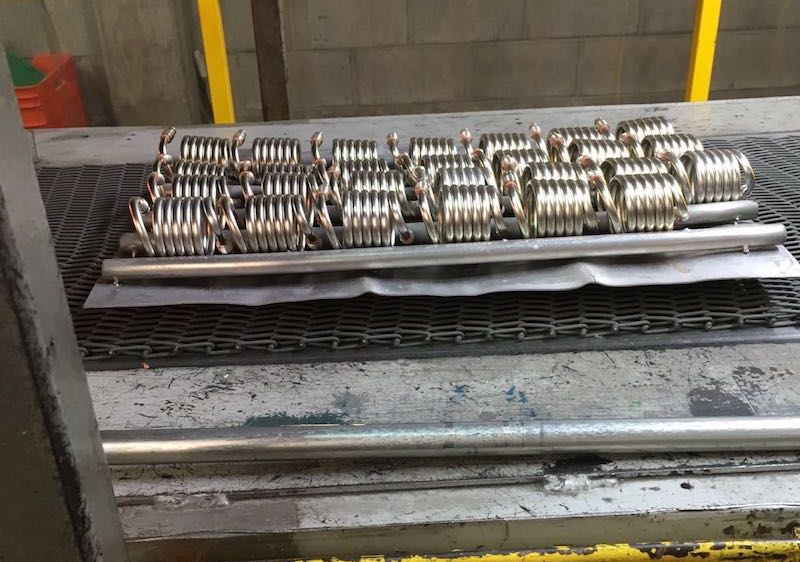Controlled Atmosphere Brazing Vs Welding
A big part of auto parts manufacturing is joining together base metals. There are three good ways to do this:
- Brazing
- Controlled atmosphere brazing
- Welding
Each method is ideal for certain applications. If you’re not sure which method is the best one for your auto part, you came to the right place. In this guide, we’ll discuss each option and answer some of the most frequently asked questions about them. If you’re still not sure which method is ideal for your application, please contact us. We’re happy to help you!
What Is Brazing?
Brazing is a process that involves joining together two base metals with molten filler metal. The filler metal melts at a lower temperature than the base metals. This ensures that the base metals won’t melt, too. The brazing process involves flowing the filler metal into the area where the two base metals overlap. Next, the filler metal solidifies and both base metals are joined together.
What Is Controlled Atmosphere Brazing?

Controlled atmosphere brazing (CAB) is like regular brazing, but it’s done in a controlled atmosphere. The atmosphere doesn’t contain any oxygen, but rather an inert gas without any oxygen molecules. This prevents oxidation, which is important because oxidation results in a low quality joint. CAB is an ideal process for metals that oxidize easily. CAB offers many benefits, some of which are listed here.
This post offers a more technical explanation of CAB.
Is Brazing Considered To Be The Same As Welding?
Brazing and welding achieve the same goal, which is to join two pieces of metal together. The methods are different:
Welding melts the base metal. Usually, additional material is added to the weld joint during the process. Joints can overlap or two pieces of metal can be butted together.
Brazing uses filler metal to join together two pieces that overlap. The filler material is melted during the process, but the base metals are not melted. Brazing is a very effective process for joining pieces of tubing.
This post explains the differences between brazing and welding in more detail.
Which Is Stronger – Brazing Or Welding?

Welding is stronger than brazing. Welding melts the base metals to join them together. This creates a strong metal fusion. Brazing uses filler metal to join together two pieces. Brazing is still strong, but welding is stronger. That’s why welding is ideal for large parts that require a lot of strength, such as steel bumpers. Brazing is ideal for smaller parts that need very tight, leakproof joints.
Is Brazing The Same As Soldering?
Brazing and soldering are very similar, but they’re not exactly the same. The joining techniques are similar. The difference is that brazing uses heat over 450 degrees C to melt the filler metal. Soldering uses heat of approximately 200 degrees C to melt the filler material. The filler materials used are quite different, and the materials used in brazing result in a stronger joint than those used in soldering.
What Metals Cannot Be Brazed?
If you want to join together two different types of metals, brazing is the way to go. Most common types of metals, for example, aluminum and steel, melt at different temperatures. This makes it difficult or impossible to weld them together.
Brazing together two different types of metals is much easier. You can braze many different types of metals together as long as the filler material used liquifies at a lower temperature than the base metals.
There are many different types of filler metals available to use. The filler metal has to:
- Wet the base metals
- Withstand the conditions within the furnace
- Melt at a lower temperature than the base metals
For these reasons, usually, an alloy of 3 or more types of metals is used to create a filler with ideal characteristics.
What Are Some Common Brazing Applications?

Brazing is a popular method used in manufacturing a very wide variety of products, including refrigerators, pipe fittings, bathroom faucets, and residential air conditioning systems, just to name a few. Brazing is also a common method used in the manufacture of many different auto parts, including cooling and air conditioning systems.
Intran Offers Quality-Managed Controlled Atmosphere Brazing Services
It’s always important to do your due diligence while looking for a contract manufacturer for the reasons listed here. It’s even more important when it comes to welding and brazing.
In Mexico, several plants offer CAB as part of their manufacturing process. Intran is one of the manufacturers that both makes parts using CAB, and also provides CAB as a stand alone service.
A lot of auto parts brands consider Intran as a top choice for CAB services. Here are a few reasons why:
- We have equipment that’s cost-effective and ideal for mid to high production. Our CAB capacity is expanding to over 2,000,000 units per year.
- We have all the certifications necessary for quality production: IATF 16949:2016 and ISO 9001:2015.
- U.S., Mexican and Canadian companies can count on less disruptions in the supply chain and quicker product delivery by re-shoring their manufacturing contracts.
Learn more about our CAB services today!
